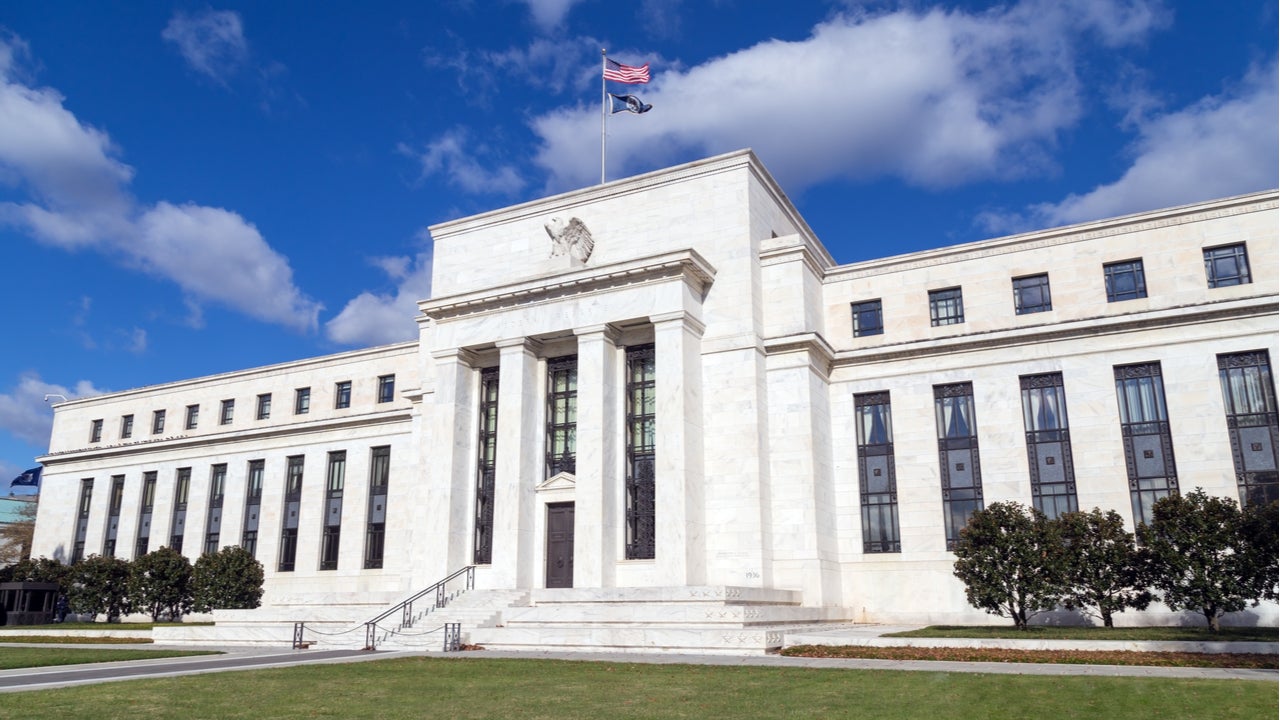How the Federal Reserve impacts personal loans

Key takeaways
- The federal funds rate impacts how expensive it is for lenders to loan money, so consumer loan rates typically change when the federal funds rate changes.
- During the Federal Open Market Committee’s May meeting, the regulatory body announced it would hold the federal funds target rate steady.
- Current personal loan rate trends and the FOMC’s decision to hold rates steady both suggest there won’t be a major drop in personal loan interest rates in the near future.
The fed funds benchmark rate impacts how much it costs for lenders to loan money, so it influences rates on consumer loans — including personal loans. After three rate cuts in 2024, the Federal Open Market Committee left the target rate at 4.25-4.5 percent in May 2025.
“The move indicates that rates for many of the borrowing costs consumers pay — ranging from credit cards and auto loans to home equity lines of credit (HELOCs) and adjustable-rate mortgages — will likely stay steady in the coming weeks,” writes Sarah Foster, Bankrate’s U.S. economy and Federal Reserve reporter.
How does the Fed affect personal loans?
The federal funds rate influences the interest rates lenders offer to new borrowers because it impacts lenders’ costs. When the rate is high, lending is more expensive. As the Fed introduced rate hikes throughout 2022 and 2023, the average personal loan rate also increased.
Even after three consecutive rate cuts in 2024, the industry average remains near historic highs. The FOMC’s May decision to leave the target rate unchanged is unlikely to budge that needle much.
How the Fed impacts existing loans
The vast majority of personal loans are fixed-rate loans, meaning the interest rate remains unchanged from origination to when it’s paid off. Borrowers with a fixed-rate personal loan will not see changes to their interest rate or monthly payments when the Fed raises or lowers rates.
That means if you lock in a low-interest fixed-rate personal loan, it won’t change based on the federal rate.
Will personal loan interest rates start to decrease?
The short answer is that they should — but it will take time, and borrowers with good to excellent credit will be the first to benefit. Some consumer loan rates have already ticked downward ahead of the cuts, including mortgage rates.
But McBride points out, “Personal loan rates haven’t been particularly interest rate sensitive in previous rate cut or rate hike cycles, with rates for borrowers with good credit moving in a range much narrower than the scope of Fed moves.”
Mark Hamrick, Bankrate senior economic analyst and Washington bureau chief, noted that the September rate cut was likely to be the first in a “steady drumbeat of cuts” from late 2024 to early 2025. He agrees with McBride that impacts are unlikely to be instantaneous.
“Because rates edged moved so high in response to historically high inflation, it will take some time to unwind much of that,” Hamrick says. “As a result, borrowing rates will take some time to edge meaningfully lower as well.”
McBride doubts that waiting to borrow will significantly impact the rates personal loan borrowers receive.
“The reality among many personal loan borrowers is that the loan is taken because the money is needed with some urgency,” he notes. “Holding off for lower rates may not be an option and the savings from doing so isn’t a game-changer. On a $5,000, 3-year loan, a difference of one percentage point in rate is less than $3 per month and less than $100 in total interest over the term.”
How can you get an affordable loan despite high interest rates?
Personal loan interest rates are currently high, but the federal rate is not the only factor affecting your loan’s cost. You can take several steps to help get the best deal possible, including improving your credit score and applying with a co-borrower.
“This is where shopping around among different lenders could really pay off,” McBride adds.
Here are some of the steps you can take to get the best deal possible on your personal loan:
- Shop around
- Check your credit
- Prequalify
- Reduce your loan amount and repayment term
- Apply with a co-borrower
Bottom line
Because personal loans are fixed-interest products, current borrowers will not be affected by the Fed’s rate changes. While interest rates on new loans are unlikely to plummet soon, new borrowers can still qualify for competitive rates by improving their credit and shopping for the best deals. If rates do cool, borrowers with good and excellent credit who took out loans when rates were at their peak should consider refinancing their personal loans.






